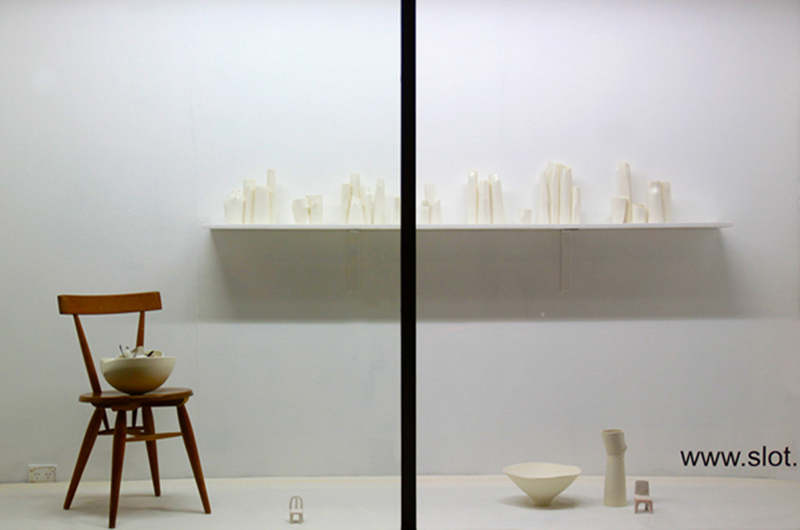7 May - 7 June Scar Vessels
Directly stemming from my Japanese heritage and familiarity with the mending and restoring technique known as Kintsugi, my current work explores the altering and reforming of fine porcelain forms through the cutting and rejoining of sections. The Kintsugi itself celebrates the damage and subsequent visible mending that results from the use of important functional objects.

Handwoven fabrics are overtly repaired (with contrasting pieces covering tears and worn areas as patches) while broken ceramics are glued (with lacquer and gold powder used to make such repairs highly visible) a clear celebration of use, breakage and its mending. Such activities are in direct conflict to the rejection of wear and breakage so embedded in my adopted Western culture.
I enjoy working with fine porcelain. It is extremely sensitive and responsive to the human touch when it’s soft. When fired, it becomes translucent and very strong. The nature of clay is endlessly fascinating.
I make a symmetrical shape on the wheel or paper-thin soft slab from porcelain, and then alter the form by cutting and re-joining the parts.
When putting the parts together with liquid clay, excess clay pushes out of the joint and makes a line like a human scar. I am drawn to the idea of an organic detail juxtaposed with the consistent lines of the wheeled form. It is like finding imperfection in our everyday.
I seek simple beauty in my work.
Keiko Matsui 0425-725- 978
Email: info@keikomatsui.com.au

Keiko Matsui's installation of Scar Vessels series consists mostly of the porcelain pieces made in 2014 with the more recent chair series. These pieces are minimal in form. The variations that create their individuality are mostly in the way the porcelain sheets are folded and joined. They enclose the space they inhabit and turned to vessels to contain. How these porcelain sheets meet dictate the forms they take. Inspired by the art of Kintsugi, the junctures are left with their 'mending' traces. Having them as an integral part of the identity of these forms, their appearance suggests bodies with healed scars.
 The configuration of the familiar shapes found in the homes of the everyday conjures up intimate domestic setting. The use of scale in the ceramic chair with the 'real' chair provides a poetic narrative on the relationships amongst the assembled pieces.
The configuration of the familiar shapes found in the homes of the everyday conjures up intimate domestic setting. The use of scale in the ceramic chair with the 'real' chair provides a poetic narrative on the relationships amongst the assembled pieces.
This reminds me of Robert Therrien's use of unusual scale in his re-creation of everyday objects as sculptures to strip the visual cue of their assigned functions. They are instead used as personal symbols to regenerate an emotional space of a childhood memory. This is echoed in Keiko's installation.
In this installation beauty is sought in the making, mending and in the arrangement. The creation of beauty in this space is controlled. It is driven by the process of working with the intrinsic nature of the materials and an 'innate knowing' that has passed down through the generation
Anie Nheu

 The configuration of the familiar shapes found in the homes of the everyday conjures up intimate domestic setting. The use of scale in the ceramic chair with the 'real' chair provides a poetic narrative on the relationships amongst the assembled pieces.
The configuration of the familiar shapes found in the homes of the everyday conjures up intimate domestic setting. The use of scale in the ceramic chair with the 'real' chair provides a poetic narrative on the relationships amongst the assembled pieces. 



